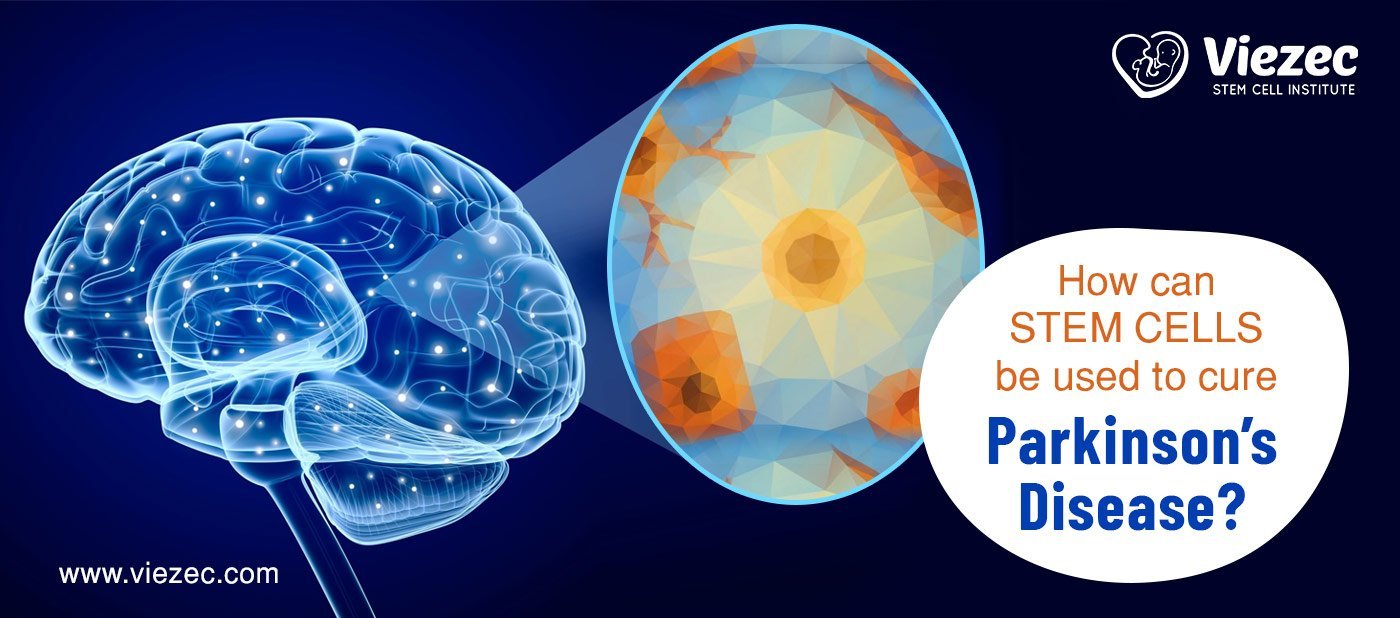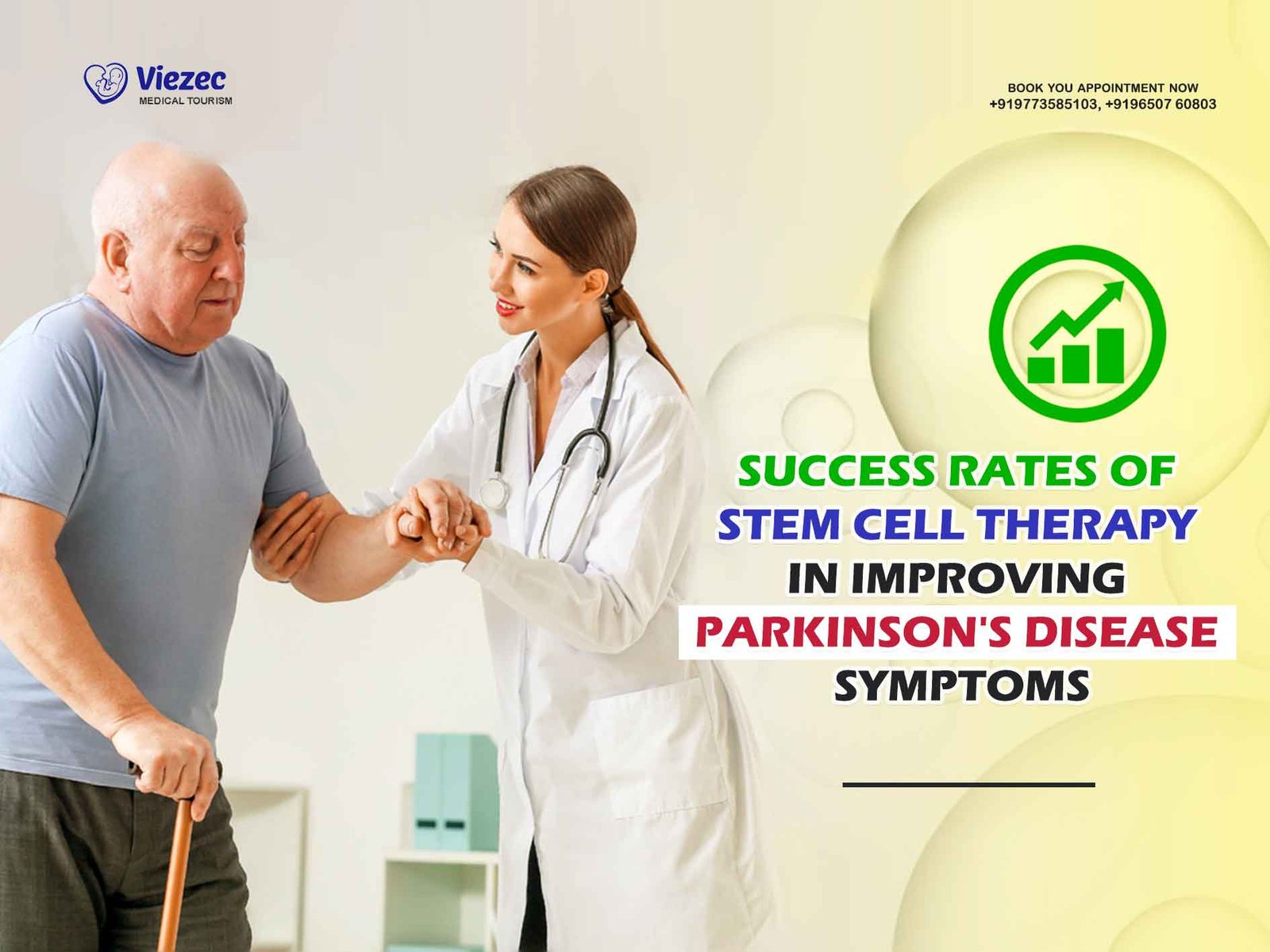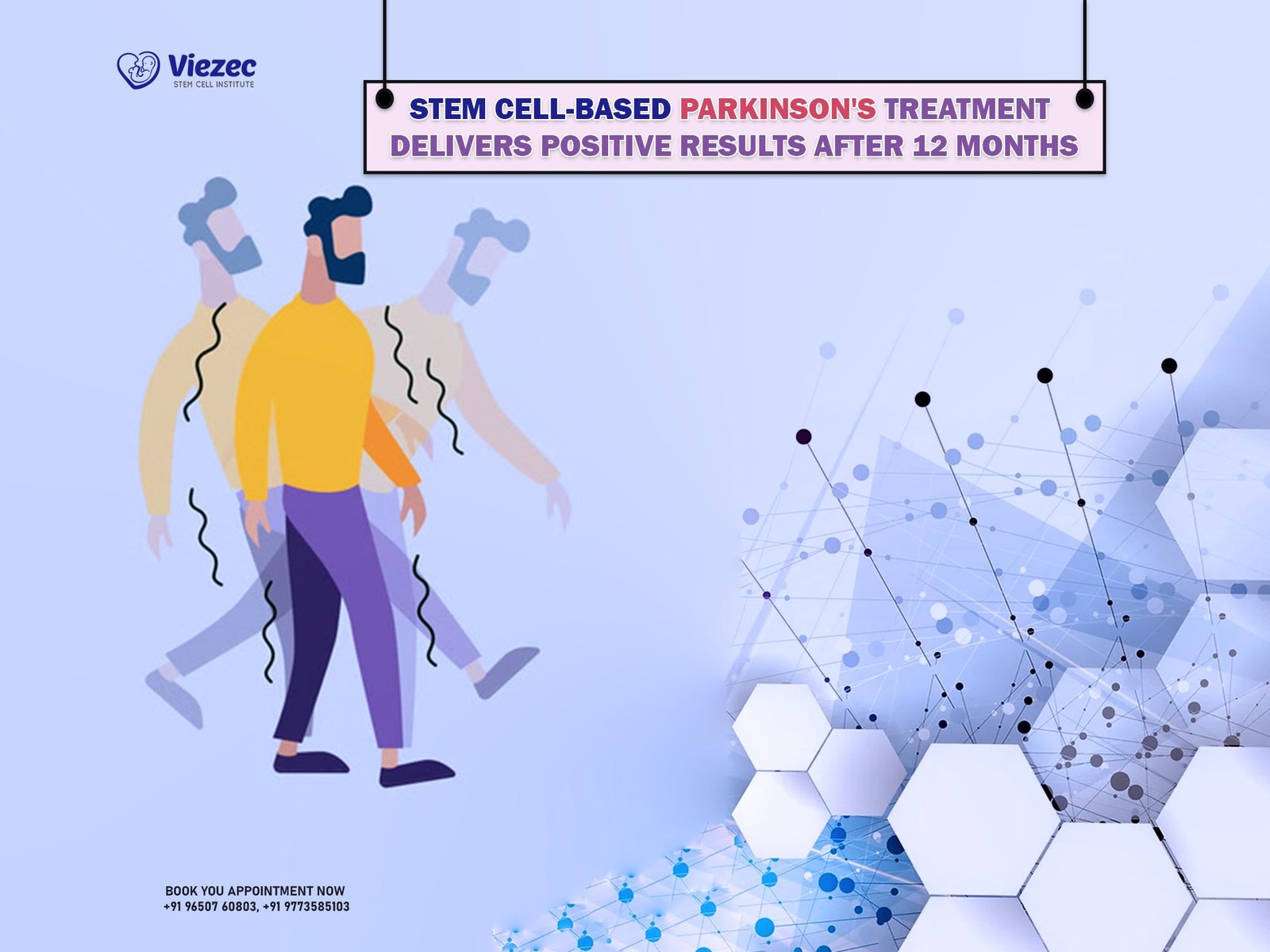Parkinson’s disease is a progressive neurodegenerative disorder that primarily affects movement control. It is characterized by symptoms such as tremors, rigidity, bradykinesia (slowness of movement), and postural instability. The disease results from the loss of dopamine-producing neurons in the substantia nigra, a region of the brain crucial for regulating movement. The exact cause of this neuronal loss remains unknown, but it is believed to involve a combination of genetic and environmental factors. Parkinson’s disease affects millions of people worldwide, significantly impacting their quality of life and independence.
Importance of Finding a Cure
The quest for a cure for Parkinson’s disease is of paramount importance due to its debilitating nature and the substantial burden it places on patients, families, and healthcare systems. Current treatments primarily focus on managing symptoms rather than addressing the underlying cause of the disease. As the population ages, the prevalence of Parkinson’s disease is expected to rise, making the need for effective treatments and ultimately a cure even more urgent. A cure would not only alleviate the suffering of individuals affected by the disease but also reduce the economic strain on healthcare resources.
Brief Overview of Stem Cell Research
Stem cell research has emerged as a promising avenue for developing innovative treatments for various diseases, including Parkinson’s disease. Stem cells possess the unique ability to differentiate into various cell types and have the potential to repair or replace damaged tissues. This characteristic makes them an attractive option for regenerating the lost dopaminergic neurons in Parkinson’s patients. Over the past few decades, significant advancements have been made in understanding stem cell biology, leading to the exploration of their therapeutic applications. In the context of Parkinson’s disease, stem cell research aims to restore normal brain function by replenishing the depleted neuronal population.
Understanding Parkinson’s Disease
Symptoms and Diagnosis
Parkinson’s disease manifests through a range of motor and non-motor symptoms. Motor symptoms include tremors, muscle rigidity, bradykinesia, and postural instability, which collectively impair movement and coordination. Non-motor symptoms, such as cognitive decline, mood disorders, sleep disturbances, and autonomic dysfunction, further complicate the disease. Diagnosing Parkinson’s disease involves a thorough clinical evaluation, including medical history, physical examination, and neurological assessments. Imaging techniques like MRI and PET scans may be used to support the diagnosis, although there is currently no definitive test for Parkinson’s disease.
Causes and Risk Factors
The exact cause of Parkinson’s disease remains elusive, but it is believed to result from a combination of genetic and environmental factors. Mutations in specific genes, such as SNCA, LRRK2, and PARK7, have been associated with an increased risk of developing the disease. Environmental factors, such as exposure to pesticides, herbicides, and heavy metals, may also contribute to the onset of Parkinson’s disease. Additionally, advancing age is a significant risk factor, as the majority of cases occur in individuals over the age of 60. A family history of Parkinson’s disease can also increase the likelihood of developing the condition.
Current Treatments and Limitations
Current treatments for Parkinson’s disease primarily aim to alleviate symptoms and improve quality of life. The most commonly used medications include levodopa, dopamine agonists, and MAO-B inhibitors, which help replenish or mimic the effects of dopamine in the brain. However, these treatments do not halt disease progression and often become less effective over time. Deep brain stimulation (DBS) is a surgical option that can provide relief for some patients, but it is not suitable for everyone and carries potential risks. Despite these treatments, there is an urgent need for therapies that address the root cause of Parkinson’s disease.
Basics of Stem Cells
Definition and Types of Stem Cells
Stem cells are undifferentiated cells capable of self-renewal and differentiation into various specialized cell types. They are categorized into three main types: embryonic stem cells (ESCs), adult stem cells (ASCs), and induced pluripotent stem cells (iPSCs). ESCs, derived from early-stage embryos, have the potential to develop into any cell type in the body. ASCs, found in various tissues, have a more limited differentiation potential and primarily serve to maintain and repair the tissue in which they reside. iPSCs are generated by reprogramming adult cells to a pluripotent state, similar to ESCs.
Characteristics and Properties
Stem cells exhibit two key properties: self-renewal and pluripotency. Self-renewal refers to their ability to divide and produce identical copies of themselves, ensuring a continuous supply of stem cells. Pluripotency is the capacity to differentiate into any cell type within the body, a characteristic particularly notable in ESCs and iPSCs. These properties make stem cells invaluable for regenerative medicine, as they can potentially replace damaged or lost cells in various diseases, including Parkinson’s disease. Additionally, stem cells can be cultured and expanded in vitro, providing a renewable source of cells for research and therapeutic purposes.
Sources of Stem Cells
Stem cells can be sourced from embryos, adult tissues, and through cellular reprogramming. Embryonic stem cells are derived from the inner cell mass of blastocysts, obtained from early-stage embryos. Adult stem cells are found in various tissues, including bone marrow, adipose tissue, and the brain. These cells are typically multipotent, meaning they can differentiate into a limited range of cell types related to their tissue of origin. Induced pluripotent stem cells are generated by reprogramming adult somatic cells, such as skin or blood cells, back into a pluripotent state. This process involves the introduction of specific genes or factors that reset the cell’s developmental potential.
Stem Cell Research in Neurodegenerative Diseases
Historical Background
The history of stem cell research in neurodegenerative diseases dates back several decades. Early studies focused on the potential of stem cells to regenerate damaged tissues and restore function. In the context of Parkinson’s disease, pioneering research demonstrated the possibility of replacing lost dopaminergic neurons using stem cell-derived cells. These initial studies laid the groundwork for subsequent advancements in stem cell biology and regenerative medicine. Over time, researchers have gained a deeper understanding of stem cell properties and their potential applications, leading to more sophisticated approaches for treating neurodegenerative diseases.
Key Milestones
Several key milestones have marked the progress of stem cell research in neurodegenerative diseases. The discovery of embryonic stem cells in the 1980s and the subsequent development of techniques to culture and manipulate these cells were significant breakthroughs. The creation of induced pluripotent stem cells in 2006 provided an alternative source of pluripotent cells, avoiding the ethical issues associated with embryonic stem cells. In recent years, advances in gene editing technologies, such as CRISPR-Cas9, have enabled precise modifications of stem cells, enhancing their therapeutic potential. These milestones have collectively propelled stem cell research towards clinical applications for neurodegenerative diseases.
Current State of Research
The current state of stem cell research in neurodegenerative diseases is highly promising. Researchers are exploring various approaches to harness the regenerative potential of stem cells for treating conditions like Parkinson’s disease. Preclinical studies using animal models have demonstrated the feasibility of using stem cell-derived dopaminergic neurons to restore motor function. Several clinical trials are underway to evaluate the safety and efficacy of stem cell-based therapies in human patients. These trials aim to assess the ability of transplanted stem cells to survive, integrate into the brain, and improve symptoms. While challenges remain, the field is moving closer to realizing the potential of stem cell therapies.
Stem Cell Therapy for Parkinson’s Disease
Mechanisms of Action
Stem cell therapy for Parkinson’s disease involves several mechanisms of action. The primary goal is to replace the lost dopaminergic neurons in the substantia nigra, thereby restoring normal dopamine levels in the brain. Transplanted stem cells can differentiate into dopaminergic neurons and integrate into the existing neural circuitry, improving motor function. Additionally, stem cells may secrete neurotrophic factors that support the survival and regeneration of existing neurons. These factors can enhance the brain’s intrinsic repair mechanisms and provide neuroprotection against further degeneration. Immunomodulation is another potential mechanism, as stem cells can modulate the immune response and reduce inflammation in the brain.
Types of Stem Cells Used
Embryonic Stem Cells
Embryonic stem cells (ESCs) are derived from early-stage embryos and possess the ability to differentiate into any cell type in the body. In the context of Parkinson’s disease, ESCs can be directed to differentiate into dopaminergic neurons, offering a potential source of replacement cells. However, the use of ESCs raises ethical concerns due to the destruction of embryos. Additionally, there are challenges related to controlling their differentiation and preventing the formation of tumors. Despite these issues, ESCs remain a valuable tool for understanding Parkinson’s disease and developing therapeutic strategies.
Induced Pluripotent Stem Cells
Induced pluripotent stem cells (iPSCs) are generated by reprogramming adult somatic cells, such as skin or blood cells, back into a pluripotent state. iPSCs share many properties with ESCs, including the ability to differentiate into dopaminergic neurons. The use of iPSCs circumvents the ethical issues associated with ESCs and allows for the creation of patient-specific stem cells, reducing the risk of immune rejection. iPSC-derived dopaminergic neurons have shown promise in preclinical studies, demonstrating the potential to restore motor function in animal models of Parkinson’s disease. Ongoing research aims to optimize the generation and differentiation of iPSCs for clinical applications.
Adult Stem Cells
Adult stem cells, also known as somatic stem cells, are found in various tissues throughout the body and play a role in maintaining and repairing those tissues. In the context of Parkinson’s disease, adult stem cells from the brain, such as neural stem cells (NSCs), can be used to generate dopaminergic neurons. These cells are less pluripotent than ESCs or iPSCs but offer a more targeted approach to cell replacement therapy. Mesenchymal stem cells (MSCs), found in bone marrow and adipose tissue, are another type of adult stem cell being investigated for their neuroprotective and immunomodulatory properties. While adult stem cells have shown potential, further research is needed to fully understand their therapeutic capabilities.
Potential Benefits and Challenges
The potential benefits of stem cell therapy for Parkinson’s disease are substantial. Replacing the lost dopaminergic neurons could significantly improve motor function and quality of life for patients. Additionally, stem cells’ ability to secrete neurotrophic factors and modulate the immune response offers further therapeutic advantages. However, several challenges must be addressed before stem cell therapy can become a mainstream treatment. These include ensuring the safety and efficacy of stem cell-derived neurons, preventing tumor formation, and achieving long-term survival and integration of transplanted cells. Ethical and regulatory considerations also play a crucial role in the development and implementation of stem cell-based therapies.
Clinical Trials and Studies
Overview of Notable Clinical Trials
Numerous clinical trials have been conducted to evaluate the safety and efficacy of stem cell therapies for Parkinson’s disease. These trials involve different types of stem cells, including ESCs, iPSCs, and adult stem cells. One notable trial involves the transplantation of iPSC-derived dopaminergic neurons into patients with Parkinson’s disease. Preliminary results have shown promising outcomes, with some patients experiencing improved motor function and reduced symptoms. Another significant trial focuses on the use of mesenchymal stem cells (MSCs) to deliver neurotrophic factors and modulate the immune response in the brain. These trials represent important steps towards the clinical application of stem cell therapies.
Key Findings and Outcomes
The key findings from clinical trials on stem cell therapy for Parkinson’s disease are encouraging. Transplanted stem cell-derived neurons have been shown to survive, differentiate, and integrate into the brain, leading to functional improvements in some patients. However, the outcomes vary depending on factors such as the type of stem cells used, the method of transplantation, and the stage of the disease. While some patients have experienced significant benefits, others have shown minimal improvement. These mixed results highlight the need for further research to optimize stem cell therapies and identify the most effective treatment protocols. Nonetheless, the positive findings provide hope for the future of Parkinson’s disease treatment.
Ethical Considerations and Regulations
The use of stem cells in clinical research and therapy raises several ethical considerations and regulatory challenges. The ethical debate surrounding the use of embryonic stem cells (ESCs) centers on the moral status of embryos and the implications of their destruction for research purposes. Induced pluripotent stem cells (iPSCs) offer a more ethically acceptable alternative, but their use still requires careful oversight. Regulatory frameworks vary by country and are designed to ensure the safety and efficacy of stem cell-based therapies. These regulations govern aspects such as informed consent, preclinical testing, clinical trial design, and the manufacturing and quality control of stem cell products. Adhering to ethical guidelines and regulatory standards is crucial for advancing stem cell therapies in a responsible and socially acceptable manner.
Mechanisms of Stem Cell Therapy
Dopaminergic Neuron Replacement
One of the primary mechanisms of stem cell therapy for Parkinson’s disease is the replacement of lost dopaminergic neurons. Stem cells can be directed to differentiate into dopaminergic neurons, which are then transplanted into the patient’s brain. These newly formed neurons can produce dopamine, the neurotransmitter deficient in Parkinson’s disease, thereby restoring normal brain function and alleviating motor symptoms. Successful integration of these neurons into the existing neural network is critical for achieving long-term therapeutic benefits. Research efforts continue to focus on optimizing the differentiation and transplantation processes to enhance the survival and functionality of transplanted neurons.
Neuroprotection and Regeneration
In addition to replacing lost neurons, stem cell therapy may offer neuroprotective and regenerative benefits. Stem cells can secrete a variety of neurotrophic factors, such as brain-derived neurotrophic factor (BDNF) and glial cell line-derived neurotrophic factor (GDNF), which support the survival and growth of neurons. These factors can enhance the brain’s intrinsic repair mechanisms and promote the regeneration of damaged neural tissue. Furthermore, stem cells may help reduce neuroinflammation, which is believed to contribute to the progression of Parkinson’s disease. By creating a more supportive environment for existing neurons, stem cell therapy holds the potential to slow or halt the degenerative process.
Immunomodulation
Another important mechanism of stem cell therapy is immunomodulation. Stem cells can modulate the immune response and reduce inflammation in the brain, which is thought to play a role in the progression of Parkinson’s disease. Mesenchymal stem cells (MSCs), in particular, have been shown to possess strong immunomodulatory properties. They can interact with immune cells, such as T cells and macrophages, to suppress inflammatory responses and promote a more favorable environment for neural repair. This immunomodulatory effect can help protect neurons from further damage and support the overall therapeutic outcome of stem cell treatments.
Techniques and Methodologies
Stem Cell Culturing and Differentiation
Culturing and differentiating stem cells into specific cell types, such as dopaminergic neurons, is a critical step in stem cell therapy. This process involves growing stem cells in specialized culture conditions and exposing them to specific signals that guide their development. Techniques such as co-culturing with neural cells, using growth factors, and genetic manipulation can enhance the efficiency and precision of differentiation. Maintaining the quality and consistency of cultured stem cells is essential to ensure their safety and efficacy for therapeutic use. Advances in cell culture technologies and protocols continue to improve the scalability and reproducibility of stem cell production.
Delivery Methods
Direct Injection
Direct injection is a common method for delivering stem cells to the brain. This technique involves injecting stem cells directly into the targeted brain regions, such as the substantia nigra or striatum, where dopaminergic neurons are lost in Parkinson’s disease. Direct injection allows for precise placement of stem cells and can maximize their potential to integrate and function within the existing neural circuitry. However, this method requires surgical intervention and carries risks associated with the procedure. Researchers are exploring ways to optimize direct injection techniques to improve the survival and efficacy of transplanted cells.
Implantation of Stem Cell-Derived Neurons
Another delivery method involves the implantation of stem cell-derived neurons or neural progenitor cells. These cells are differentiated in vitro and then transplanted into the patient’s brain. The goal is to integrate these neurons into the neural network and restore lost functions. This approach may provide more control over the differentiation process and increase the likelihood of successful integration. Advances in biomaterials and scaffold technologies are being investigated to support the survival and maturation of implanted neurons. Implantation methods offer a promising alternative to direct injection, with the potential for enhanced therapeutic outcomes.
Monitoring and Assessment
Monitoring and assessing the outcomes of stem cell therapy is crucial for evaluating its safety and efficacy. Various imaging techniques, such as MRI and PET scans, are used to track the survival, migration, and integration of transplanted stem cells. Functional assessments, including motor tests and cognitive evaluations, help determine the clinical benefits of the therapy. Biomarker analysis and electrophysiological recordings can provide additional insights into the mechanisms of action and therapeutic effects. Long-term follow-up studies are essential to assess the durability of the treatment and identify any potential adverse effects. Rigorous monitoring and assessment protocols are integral to the successful development of stem cell-based therapies.
Challenges and Limitations
Scientific and Technical Challenges
The development of stem cell therapies for Parkinson’s disease faces several scientific and technical challenges. One major challenge is ensuring the consistent and efficient differentiation of stem cells into functional dopaminergic neurons. Controlling the differentiation process and preventing the formation of unwanted cell types or tumors is critical for safety and efficacy. Additionally, achieving long-term survival and integration of transplanted cells in the brain remains a significant hurdle. Overcoming these challenges requires advances in stem cell biology, tissue engineering, and delivery technologies. Collaborative efforts among researchers, clinicians, and industry partners are essential to address these complexities and translate stem cell research into clinical practice.
Ethical and Legal Issues
Ethical and legal issues surrounding stem cell research and therapy are complex and multifaceted. The use of embryonic stem cells (ESCs) raises ethical concerns due to the destruction of embryos, leading to debates about the moral status of embryos. While induced pluripotent stem cells (iPSCs) offer an ethically acceptable alternative, they are not without challenges. Ensuring informed consent, protecting patient privacy, and maintaining transparency in clinical trials are critical ethical considerations. Additionally, navigating the regulatory landscape and obtaining approval for stem cell therapies requires compliance with stringent guidelines and standards. Addressing these ethical and legal issues is crucial for advancing stem cell therapies in a responsible and socially acceptable manner.
Patient Perspectives
Case Studies and Testimonials
Patient perspectives are invaluable in understanding the real-world impact of stem cell therapy for Parkinson’s disease. Case studies and testimonials provide insights into the experiences of individuals who have undergone stem cell treatments. These personal accounts highlight the potential benefits and challenges associated with the therapy. Some patients report significant improvements in motor function, reduced symptoms, and enhanced quality of life. However, others may experience minimal or no benefits, underscoring the variability in treatment outcomes. Sharing patient stories can inspire hope, foster a sense of community, and contribute to the ongoing dialogue about the potential of stem cell therapy.
Quality of Life Improvements
Quality of life improvements are a key measure of success for stem cell therapy in Parkinson’s disease. Enhancing motor function, reducing symptoms, and improving overall well-being are primary goals of the treatment. Patients who experience positive outcomes often report greater independence, increased mobility, and a reduction in medication use. Improvements in non-motor symptoms, such as mood, sleep, and cognitive function, can also significantly enhance quality of life. These benefits extend beyond the individual, positively impacting families and caregivers. Assessing quality of life improvements through patient-reported outcomes and clinical evaluations is essential for evaluating the true impact of stem cell therapy.
Patient Advocacy and Support Groups
Patient advocacy and support groups play a vital role in the Parkinson’s disease community. These organizations provide resources, education, and emotional support to individuals affected by the disease and their families. Advocacy groups also raise awareness about Parkinson’s disease and promote research initiatives, including stem cell therapy. By connecting patients with clinical trials and fostering collaboration between researchers and the community, advocacy groups help advance the development of new treatments. Additionally, they provide a platform for patients to share their experiences, advocate for their needs, and contribute to shaping healthcare policies. Patient advocacy and support groups are essential partners in the journey towards finding a cure for Parkinson’s disease.
FAQs
What are stem cells and how do they work in treating Parkinson’s disease?
Stem cells are undifferentiated cells capable of developing into various specialized cell types. In Parkinson’s disease treatment, stem cells can be differentiated into dopaminergic neurons, which are then transplanted into the patient’s brain. These new neurons can produce dopamine, the neurotransmitter deficient in Parkinson’s disease, thereby restoring normal brain function and alleviating symptoms.
Are there any risks associated with stem cell therapy for Parkinson’s disease?
Yes, there are risks associated with stem cell therapy, including the potential for tumor formation, immune rejection, and complications from the surgical procedure. Ensuring the safety and efficacy of stem cell-derived neurons, controlling their differentiation, and achieving long-term survival and integration are critical challenges that researchers are actively addressing.
How do clinical trials for stem cell therapy work?
Clinical trials for stem cell therapy involve several phases, starting with preclinical studies in animal models to assess safety and efficacy. Successful preclinical results lead to human trials, which are conducted in phases to evaluate safety, dosage, and therapeutic effectiveness. Participants in these trials are closely monitored for outcomes and potential side effects.
Where can I find more information about stem cell therapy for Parkinson’s disease?
For more information about stem cell therapy for Parkinson’s disease, you can visit reputable medical research institutions, patient advocacy groups, and clinical trial registries. These sources provide up-to-date information on ongoing research, clinical trials, and patient resources. Always consult with healthcare professionals before considering any new treatment options.








